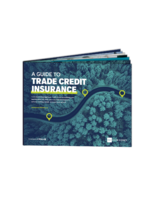ASTM Subcommittees work on proposed polymer matrix standards.
Press Release Summary:
ASTM Subcommittee D30.05 is developing proposed standard, ASTM WK22348, Test Method for Transverse Shear Strength of Fiber-Reinforced Polymer Matrix Composite Bars, which will be used by composite material rebar manufacturers, research laboratories, highway engineers, glued-laminated lumber producers, and structural engineers. Proposed standard ASTM WK22949, by Subcommittee D30.06, will offer test method for characterizing delamination toughness of laminated composites.
Original Press Release:
ASTM Composite Materials Subcommittees Works on Proposed Polymer Matrix Standards
W. CONSHOHOCKEN, Pa., 6 May 2009-Polymer matrix composites are widely used in a variety of civil engineering projects, including highway construction and concrete pavements. ASTM Subcommittees D30.05 on Structural Test Methods and D30.06 on Interlaminar Properties are both working on proposed new standards that involve fiber reinforced polymer matrix composites. The subcommittees are under the jurisdiction of ASTM International Committee D30 on Composite Materials.
Transverse Shear Strength
Subcommittee D30.05 is currently developing a proposed new standard, ASTM WK22348, Test Method for Transverse Shear Strength of Fiber-Reinforced Polymer Matrix Composite Bars.
"Concrete pavements have joints in them to accommodate thermal movements" says Russell Gentry, Georgia Institute of Technology, and a co-chair of D30.05. "Large diameter dowel bars are used to bridge across these joints to prevent transverse movement of pavements. The proposed test method captures this sort of loading on the bar." Gentry notes that there are many other applications for composite material bars loaded in this way.
According to Gentry, primary users of ASTM WK22348 will be manufacturers of composite material rebar, research laboratories, highway engineers, glued-laminated lumber producers and structural engineers.
Interlaminar Fracture Toughness
Delamination growth, or the growth of cracks in between layers in laminated composite materials, can occur during usage (for example, low-velocity impact), from unexpected overloads of a structure or from an extended lifetime of normal service loadings.
A proposed new ASTM standard will be part of a series of test methods developed by D30.06 that characterize the delamination toughness of laminated composites.
Two test methods already developed by D30.06 that deal with this type of testing are ASTM D5528, Test Method for Mode I Interlaminar Fracture Toughness of Unidirectional Fiber-Reinforced Polymer Matrix Composites, and ASTM D6671/D6671M, Test Method for Mixed Mode I-Mode II Interlaminar Fracture Toughness of Unidirectional Fiber Reinforced Polymer Matrix Composites.
According to Barry Davidson, a professor in the mechanical and aerospace engineering department at Syracuse University, and a D30 member, the need for a standard dealing exclusively with Mode II loading is a high priority. The subcommittee is now addressing Mode II loading with the development of proposed standard WK22949, Test Method for Determination of the Mode II Interlaminar Fracture Toughness of Unidirectional Fiber Reinforced Polymer Matrix Composites Using the End-Notched Flexure (ENF) Test.
"Delamination growth represents a critical failure mode in structures fabricated from fiber reinforced polymer matrix composites, so there is a concerted effort to develop the tools and techniques to make sure that this does not occur," says Davidson. "A key component of the approach is the determination of a materials resistance to delamination growth, or toughness."
Davidson says that toughness assessments using ASTM WK22949 will be used in the development of new materials, for selecting among materials for structural applications, for screening the quality of new batches of material to be used in production and to support structural design and analysis efforts.
For technical Information, contact: (WK22348) Russell Gentry, Georgia Institute of Technology, Atlanta, Ga. (phone: 404-404-8943; russell.gentry@arch.gatech.edu); (WK22949) Barry Davidson, Syracuse University, Syracuse, N.Y. (phone: 315-443-4201; bddavids@syr.edu).
ASTM International welcomes and encourages participation in the development of its standards. ASTM's open consensus process, using advanced Internet-based standards development tools, ensures worldwide access for all interested individuals. For more information on becoming an ASTM member, please contact Jennifer Rodgers, ASTM International (phone: 610-832-9694; jrodgers@astm.org).
Established in 1898, ASTM International is one of the largest international standards development and delivery systems in the world. ASTM International meets the World Trade Organization (WTO) principles for the development of international standards: coherence, consensus, development dimension, effectiveness, impartiality, openness, relevance and transparency. ASTM standards are accepted and used in research and development, product testing, quality systems and commercial transactions around the globe.




